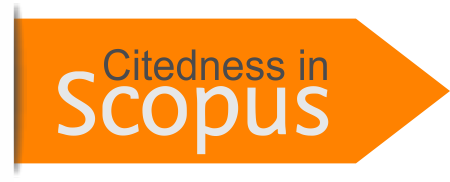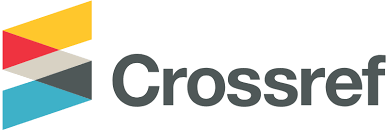Fundamental Factors Bond Ratings: Modified Jones Model as Mediating Variable
Abstract
The Study aims to ascertain how the debt-to-equity ratio, earnings management, and current ratio affect bond ratings in corporate businesses assessed by PT. PEFINDO 2020–2022 and listed on the Indonesia Stock Exchange. The reason earnings management is used as mediation in this research is a novelty from previous research, where earnings management is rarely used. The earnings management model used by the Jones modified has a higher level of accuracy compared to previous models, where the measurement is through revenue recognition which has the highest accuracy. Apart from that, many companies use earnings management practices so that the company's finances look good to investors, so the company will get new investors. In this study, 135 sample bond types that fit the predefined criteria were obtained from 26 organizations using purposive sampling with several preset criteria. Data analysis methods were uses path analysis techniques with the Lisrel program version 8.8 to analyze the available bond types. This study suggests that earnings management does not mediate between bond ratings and the current ratio. In particular, bond ratings are significantly impacted by the current ratio, the debt-to-equity ratio does not strongly impact earnings management, and bond ratings are not significantly affected by earnings management.
Keywords
Full Text:
PDFReferences
Alfiani, A. P. (2013). Pengaruh Rasio Solvabilitas, Rasio Aktivitas, Rasio Likuiditas Dan Ukuran Perusahaan Terhadap Peringkat Obligasi Perusahaan (Perusahaan Non Keuangan yang Terdaftar di BEI Tahun 2008-2011). Jurnal Ekonomi, September, 1–27. http://ejournal.unp.ac.id/students/index.php/akt/article/viewFile/715/472
Aluman, S. N. A., Hais Dama, & Ishak, I. M. (2022). Pengaruh Likuiditas, Solvabilitas Dan Profitabilitas Terhadap Peringkat Obligasi Pada Perusahaan Sektor Perbankan Yang Terdaftar Di Bursa Efek Indonesia Periode 2016-2020. Jurnal Ilmiah Manajemen Dan Bisnis, 5(2), 583–592.
Arif, B. W. (2012). Pengaruh Manajemen Laba dan Rasio KeuanganArif, B. W. (2012). Pengaruh Manajemen Laba dan Rasio Keuangan Perusahaan terhadap Peringkat ObligasiArif, B. W. (2012). Pengaruh Manajemen Laba dan Rasio Keuangan Perusahaan terhadap Peringkat Obligasi. 1–59. 1–5 (pp. 1–59).
CNBCIndonesia. (2023). tang emiten BUMN Karya PT Waskita Karya Tbk (WSKT) terus bergulir.
DataIndonesia.id. (2023). Indeks Obligasi Indonesia (ICBI) Kembali Naik.
Dechow, P. M., Sleoan, R. G., & Sweeney, A. P. (2012). Detecting Earnings Management. In Asian Financial Statement Analysis (pp. 73–105). https://doi.org/10.1002/9781119204763.ch4
Dianitha, K. A., Masitoh, E., & Siddi, P. (2020). Pengaruh Rasio Keuangan Terhadap Pertumbuhan Laba Pada Perusahaan Makanan Dan Minuman Di Bei. Jurnal Akuntansi : Transparansi Dan Akuntabilitas, 8(2), 127–136. https://doi.org/10.35508/jak.v8i2.2874
Ekonomi Global. (2022). Investor Global Mengurangi Investasi pada Obligasi. London. https://www.kompas.id/baca/internasional/2022/10/06/para-investor-global-mengurangi-investasi-pada-obligasi
Fahmi, I. (2014). Pengantar Manajemen Keuangan.
Fairuz omar, M.zubair, B. omar and B. M. (2009). Turbidimeter Design and Analysis.
Hafindania, R., & Hakiman. (2020). DETERMINANTS OF BOND RATING ( CASE STUDY ON CONSUMER FINSNCE COMPANIES OF INDONESIA STOCK EXCHANGE IN 2018 PERIODE). 1(5), 51–63. https://doi.org/10.31933/DIJDBM
Hartono. (2009). Statistik Untuk Penelitian.
Hung, S., Ginting, E. S., & Joe, S. (2021). The Effect Of Profitability, Liquidity, Leverage On Bond Rating Of Financial Companies. Journal of Management Science (JMAS), 4(4), 106–112. https://doi.org/10.35335/jmas.v4i4.114
Januri. (2020). Faktor Faktor Yang Mempengaruhi Manajemen Laba Pada Perusahaan Properti. Scenario 2020, 407–419.
Jensen, M. C., & Meckling, W. H. (2019). Theory of the firm: Managerial behavior, agency costs and ownership structure. Corporate Governance: Values, Ethics and Leadership, 77–132. https://doi.org/10.4159/9780674274051-006
Jones, J. J. (1991). Earnings Management During Import Relief Investigations. Journal of Accounting Research, 29(2), 193. https://doi.org/10.2307/2491047
Kalbuana, N., Suryati, A., & Pertiwi, C. P. A. (2022). Effect of Company Age, Audit Quality, Leverage and Profitability on Earnings Management. International Journal of Economics, Business and Accounting Research (IJEBAR), 6(1), 305. https://doi.org/10.29040/ijebar.v6i1.4796
Kurniasih, S., & Surachim, A. (2019). Debt to Equity Ratio (DER) dan Return On Asset (ROA) untuk Meningkatkan Harga Saham. Strategic : Jurnal Pendidikan Manajemen Bisnis, 18(2), 44. https://doi.org/10.17509/strategic.v18i2.17590
Kusnendi. (2008). Model Persamaan Struktural satu dan multigroup. CV Alfabet.
Kustiyaningrum, D., Nuraina, E., & Wijaya, A. L. (2017). Pengaruh Leverage, Likuiditas, Profitabilitas, Dan Umur Obligasi Terhadap Peringkat Obligasi (Studi Pada Perusahaan Terbuka Yang Terdaftar Di Bursa Efek Indonesia). Assets: Jurnal Akuntansi Dan Pendidikan, 5(1), 25. https://doi.org/10.25273/jap.v5i1.1184
Maghfiroh, U. A., & Fidiana, -. (2019). Manajemen Laba, Profitabilitas, dan Likuiditas sebagai Peringkat Obligasi. Journal of Research and Applications: Accounting and Management, 3(3). https://doi.org/10.18382/jraam.v3i3.203
Maskami, S., Putra, R. B., & Pondrinal, M. (2022). Bond Prices Through Bond Ranking As Intervening Variables: Liquidity,. International Journal of Economics Development Research, 3(April), 122–142.
MediaAsuransiNews.Co.id. (2023). Pefindo Revisi Outlook Ricobana Abadi Jadi Negatif dari CreditWatch.
Pasardana.id. (2021). Pefindo Ganjar Peringkat Utang Barata Indonesia Gagal Bayar. Pasardana.Id. https://pasardana.id/news/2021/9/9/pefindo-ganjar-peringkat-utang-barata-indonesia-gagal-bayar/
Petty Arisanti, Eko Prasetyo, & Rini Ratna Nafitasari. (2022). Pengaruh Manajemen Laba, Rasio Keuangan Terhadap Peringkat Obligasi. Indonesian Journal of Applied Accounting and Finance, 2(1), 37–44. https://doi.org/10.31961/ijaaf.v2i1.1293
Prihadi, T. (2019). Analisis Laporan Keuangan. In Analisis Laporan Keuangan. Gramedia Pusaka Utama.
Purba, I. R., & Mahendra, A. (2023). Pengaruh Profitabilitas, Likuiditas, Dan Leverage Terhadap Peringkat Obligasi Pada Perusahaan Properti Dan Real Estate Yang Terdaftar Di Bursa Efek Indonesia Periode 2019-2021. Ekonomi, 9(1), 55–74.
Ramadhani, S., & Juwita, R. (2022). Pengaruh Return On Equity (ROE), Current Ratio (CR), Debt To EquityRatio (DER), Inventory Turnover (IT), Dan Price Earning Ratio (PER)Terhadap Peringkat Obligasi Korporasi Yang TerdaftarDi Bursa Efek Indonesia (BEI) Periode 2016-2020. Jurnal Ilmiah Ekonomi Dan Bisnis Universitas Multi Data Palembang, 11(2), 403–410.
Rosita, N., Sholichah, M., & Santoso, R. A. (2022). Determinan peringkat obligasi korporasi di indonesia. Fair Value: Jurnal Ilmiah Akuntansi Dan Keuangan, 5(3), 1333–1346. https://doi.org/10.32670/fairvalue.v5i3.2457
ROSITA, S. (2015). PENGARUH FRIM SIZE, ROA DAN DER TERHADAP MANAJEMEN LABA. II Nomor 2, 50–66.
Rusfian, effy zalfiana. (2021). Pengaruh visual apple terhadap online implusive. 88.
Sari, S. R. K. (2010). Praktik Manajemen Laba Terkait Pringkat Obligasi. 7823–7830.
Sarif, S., Idrus, M., & Azis, M. (2023). Analisis Teori Sofyan Syafri Harahap tentang Rasio Lancar ( Current Ratio ) pada Perusahaan Sektor Barang Konsumsi di Bursa Efek Indonesia. 3(3), 136–142.
Sihombing, H. J., & Rachmawati, E. N. (2015). Faktor-Faktor Yang Mempengaruhi Peringkat Obligasi Pada Perusahaan yang Terdaftar di Bursa Efek Indonesia. Jurnal Ekonomi KIAT, 26(1), 47–56.
Sinaga, M. F. (2018). Pengaruh Return on Assets Dan Return on Equity.
Sugiyono. (2017). Metode Penelitian Kuantitatif dan Kualitatif (p. 61).
Susanto, M. A. H., Mardi, W. N., & Susanto, H. (2022). Pengaruh Rasio Keuangan Terhadap Peringkat Obligasi Dengan Manajemen Laba Sebagai Variabel Intervening Pada Perusahaan Yang Terdaftar Di Bursa Efek Indonesia Tahun 2019-2021. Jurnal Mahasiswa, 4(4), 152–167.
Suyono, E. (2017). Bebagai Model Pengukuran Earnings Management : Sustainable Competitive Advantage-7 (Sca-7) Feb Unsoed, 7(September), 303–324. https://www.researchgate.net/profile/Eko_Suyono2/publication/321490082_Berbagai_Model_Pengukuran_Earnings_Management_Mana_yang_Paling_Akurat/links/5a2793cea6fdcc8e866e792d/Berbagai-Model-Pengukuran-Earnings-Management-Mana-yang-Paling-Akurat.pdf
Weniasti, A., & Marsoem, B. S. (2019). The Effect of Bonds Rating , Profitability , Leverage , and Firm Size on Yield to Maturity Corporate Bonds. International Journal of Innovative Science and Research Technology, 4(8), 286–295.
Widayanti, D, K., & B, W. (2019). Pengaruh Profitabilitas, Debt Equity Ratio, Dan Ukuran Perusahaan Terhadap Manajemen Laba. Jurnal Akuntansi Dan Sistem Teknologi Informasi, 15, 509–518.
Zhaoayang Gu. (2006). Akrual , Perataan Laba dan Peringkat Obligasi. 412.
Zuhri, M. S., Mardani, R. M., & Wahono, B. (2019). Pengaruh Manajemen Laba Dan Rasio Keuangan Terhadap Peringkat Obligasi Pada Perusahaan Yang Terdaftar Di Bei. E–Jurnal Riset Manajemen, Fakultas Ekonomi Unisma, 79–92.
DOI: https://doi.org/10.46336/ijbesd.v5i2.596
Refbacks
- There are currently no refbacks.
Copyright (c) 2024 International Journal of Business, Economics, and Social Development

This work is licensed under a Creative Commons Attribution 4.0 International License.
Published By:
IJBESD: Jalan Riung Ampuh No. 3, Riung Bandung, Kota Bandung 40295, Jawa Barat, Indonesia
IJBESD Indexed By:
 This work is licensed under a Creative Commons Attribution 4.0 International License.
This work is licensed under a Creative Commons Attribution 4.0 International License.






.png)



